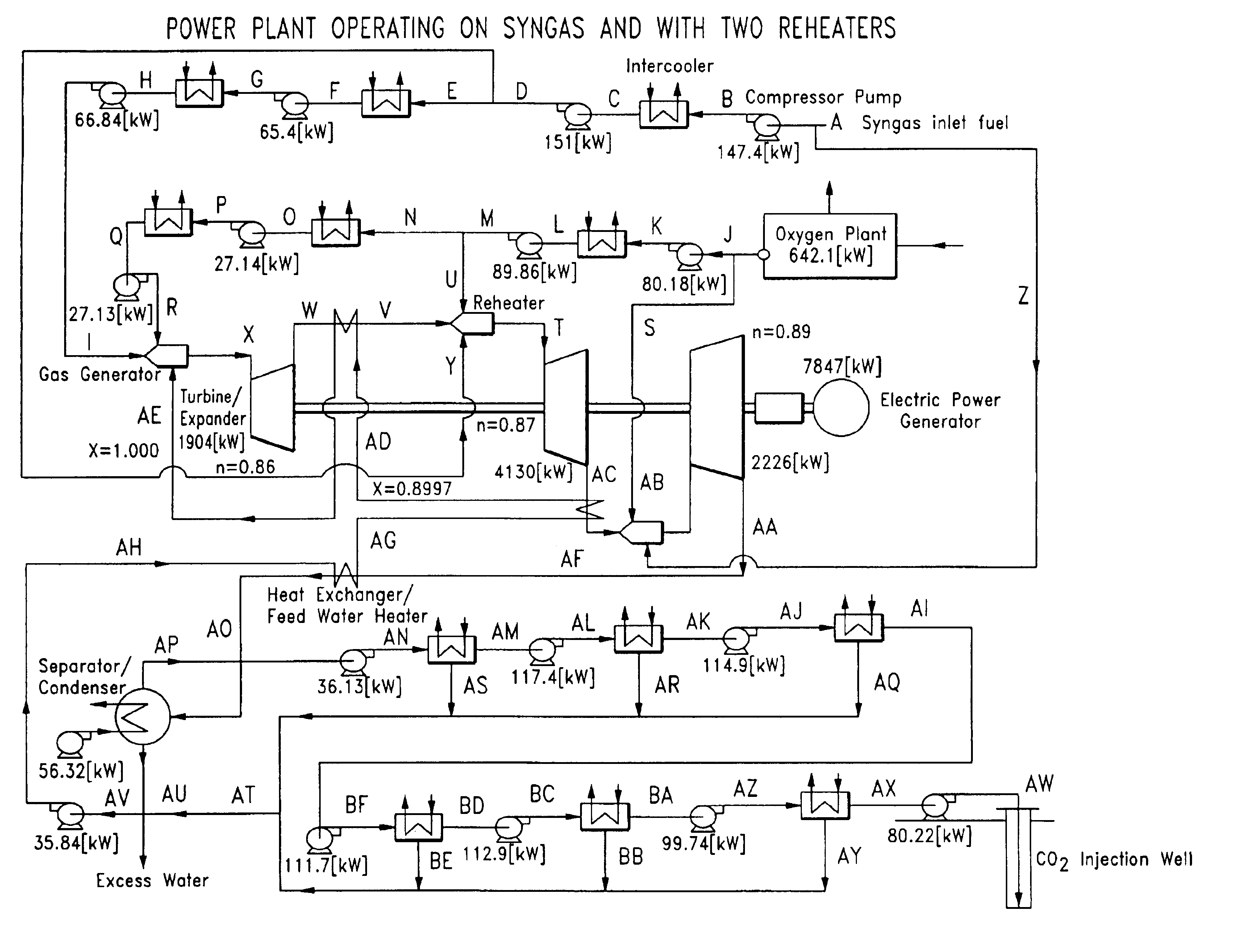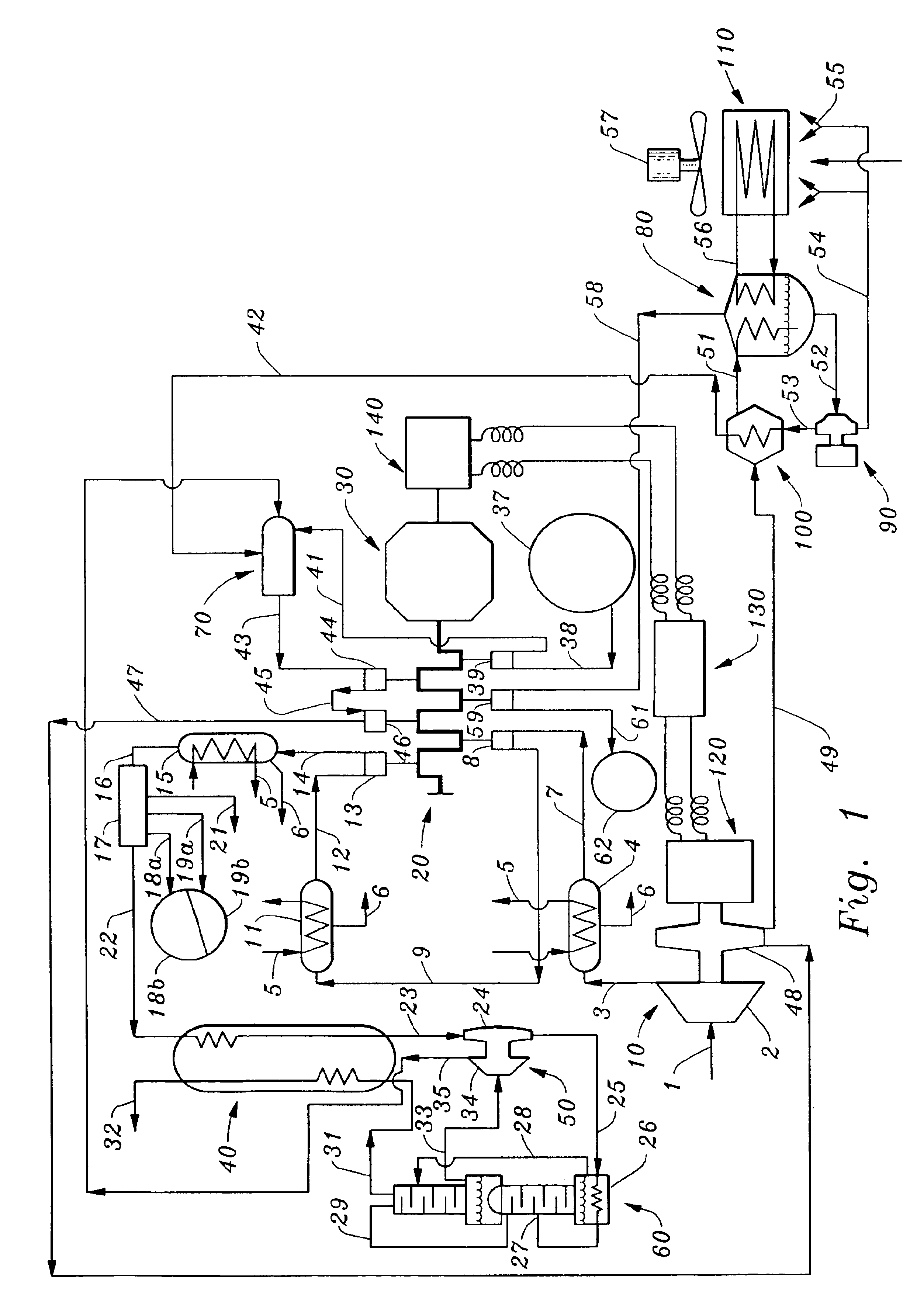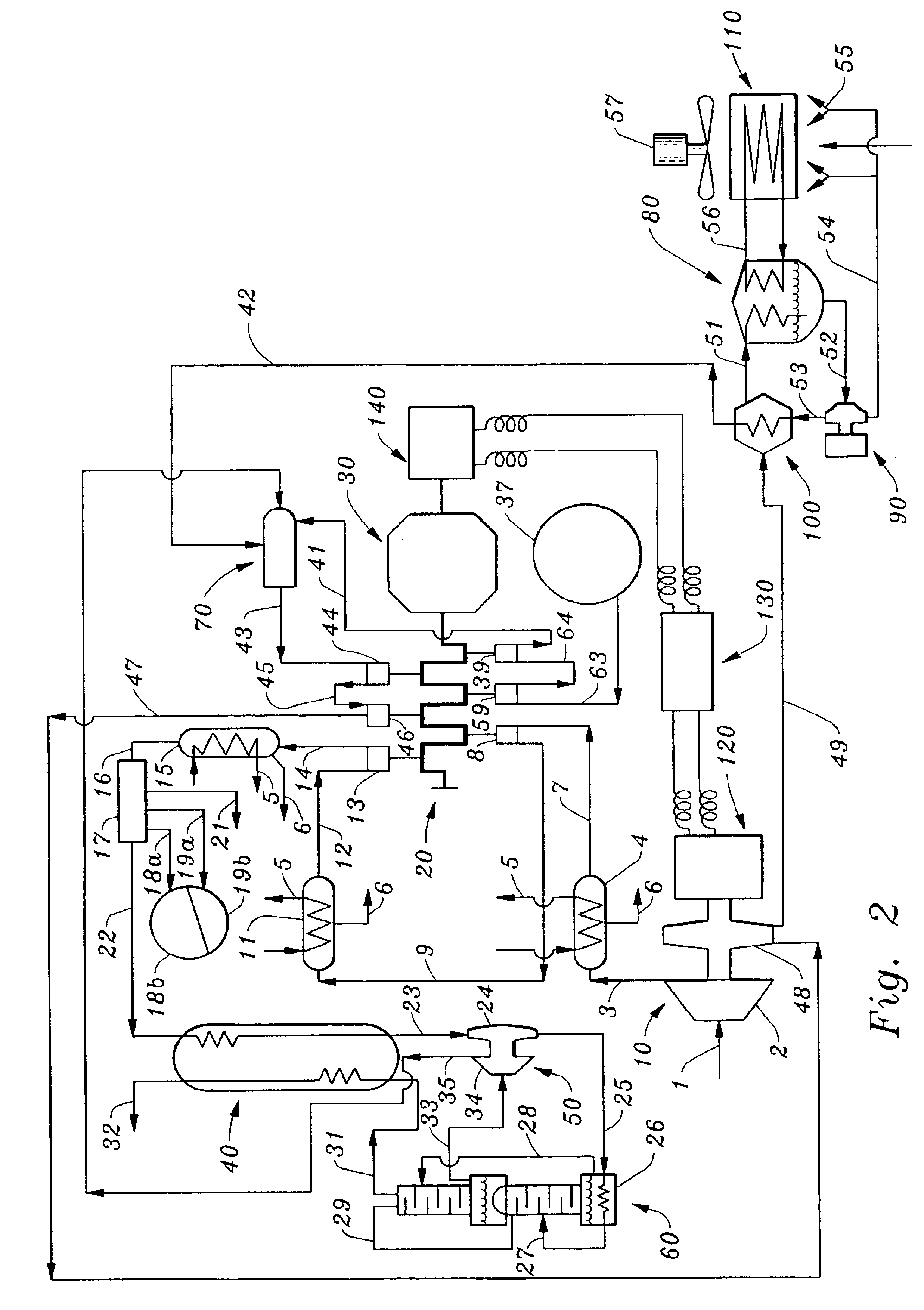Low pollution power generation system with ion transfer membrane air separation
a technology of ion transfer membrane and power generation system, which is applied in the direction of efficient propulsion technology, machines/engines, light and heating apparatus, etc., can solve the problems of reducing the number of cars and miles driven, and preventing the emission of air pollutants. achieve the effect of nitrogen oxides
- Summary
- Abstract
- Description
- Claims
- Application Information
AI Technical Summary
Benefits of technology
Problems solved by technology
Method used
Image
Examples
first embodiment
[0046]According to the present invention, a zero or very low pollution Rankine cycle thermal engine operating in parallel with a zero emissions electric motor (also referred to as a hybrid engine) is illustrated in FIG. 1. The Rankine engine consists of a dynamic turbocompressor 10, a reciprocating engine 20, a power transmission 30, a heat exchanger 40, a turboexpander 50, a rectifier 60, a gas generator 70, a condenser 80, a recirculating water feed pump 90, a water heater 100 and a condenser coolant radiator 110. The electric engine consists of an alternator 120, a battery 130 and electric motor 140.
[0047]Hybrid engine operation begins by starting the electric motor 140 using the battery 130 as the energy source. The electric motor 140 drives the reciprocating engine 20 through the power transmission 30 and thereby initiates the start of the thermal engine that requires a chill-down period for the liquefaction equipment consisting of heat exchanger 40, turboexpander 50 and rectif...
sixth embodiment
[0054]Following the complete combustion of the high temperature gases, recirculating water is injected into the gas generator 70 through line 42 and dilutes the high temperature gases to a lower temperature drive gas acceptable to the reciprocating engine (approximately 2000° R). This water influx also increases a mass flow rate of combustion products available for expansion and power generation. The drive gas then exits the gas generator 70 through discharge duct 43, enters reciprocating cylinder 44, expands and provides power to the power transmission 30. Other combustion product expansion devices can replace the reciprocating cylinder 44, such as the dynamic turbines discussed in the sixth embodiment below. The gas exits through duct 45, enters the second cylinder 46, expands and also provides power to the power transmission; the gas exits through duct 47 and powers the dynamic turbine 48 which drives the centrifugal compressor 2, which was driven by the electric motor 140 during...
second embodiment
[0058]this invention, illustrated in FIG. 2, features a hybrid engine when using hydrogen in place of a hydrocarbon fuel. When using hydrogen as the fuel no carbon dioxide is generated and only high purity steam exits from the gas generator 70. Consequently all systems related to carbon dioxide are deleted, and no other changes are basically required. However, to maintain the same six cylinder engine of FIG. 1, the hydrogen fuel FIG. 2 exits the fuel supply tank 37 through duct 63, enters reciprocating engine cylinder 59, exits through duct 64, enters reciprocating engine cylinder 39, exits through duct 41 and is delivered to the gas generator 70. This permits two stages of compression for the low density hydrogen.
PUM
 Login to View More
Login to View More Abstract
Description
Claims
Application Information
 Login to View More
Login to View More - R&D
- Intellectual Property
- Life Sciences
- Materials
- Tech Scout
- Unparalleled Data Quality
- Higher Quality Content
- 60% Fewer Hallucinations
Browse by: Latest US Patents, China's latest patents, Technical Efficacy Thesaurus, Application Domain, Technology Topic, Popular Technical Reports.
© 2025 PatSnap. All rights reserved.Legal|Privacy policy|Modern Slavery Act Transparency Statement|Sitemap|About US| Contact US: help@patsnap.com



